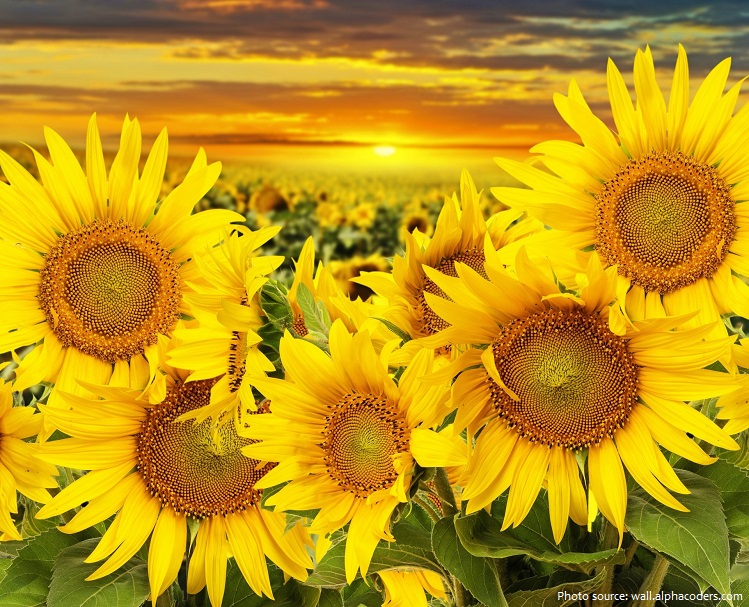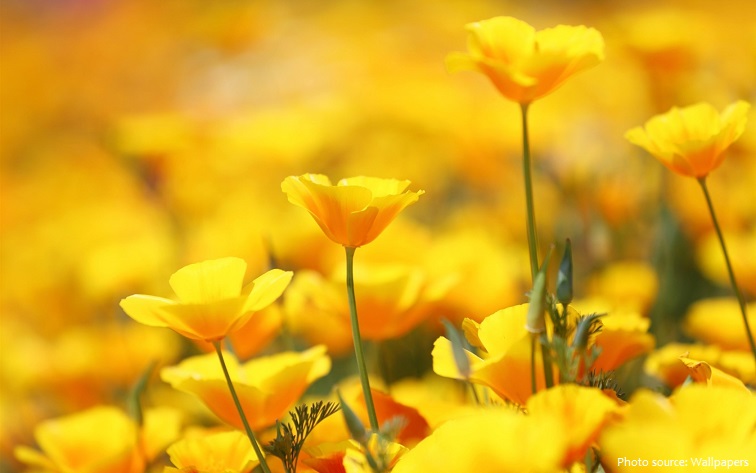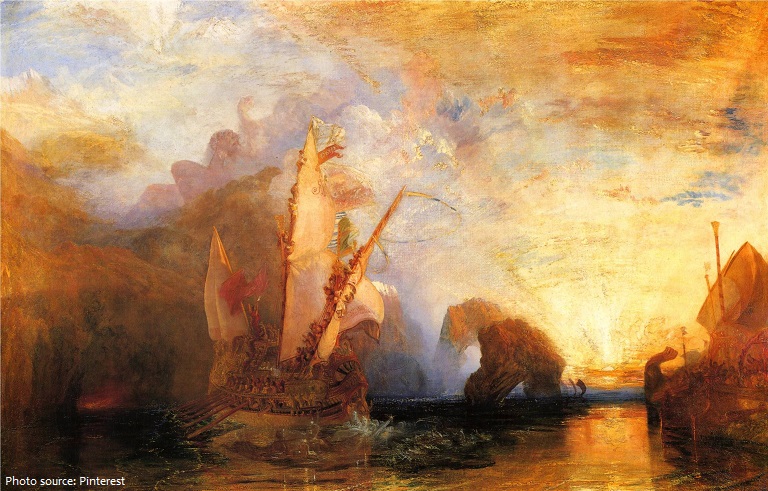
Yellow is one of the three primary colours in painting.
It is the color between orange and green on the spectrum of visible light.
Yellow is the color the human eye sees when it looks at light with a dominant wavelength between 570 and 590 nanometers.
In the RGB color model, used to create colors on television and computer screens, yellow is a secondary color made by combining red and green at equal intensity.
Yellow is the most luminous of all the colors of the spectrum. It’s the color that captures our attention more than any other color.

Pigments for yellow have come from yellow ochre, lead tin oxide, the mineral orpiment from arsenic sulfide, and artificial chemical compounds.
Carotenoids give the characteristic yellow color to autumn leaves, corn, canaries, daffodils, and lemons, as well as egg yolks, buttercups, and bananas. They absorb light energy and protect plants from photodamage in some cases.
In our contemporary human-made world, yellow is the color of Sponge Bob, the Tour de France winner’s jersey, happy faces, post its, and signs that alert us to danger or caution.
Sunlight has a slight yellowish hue when the Sun is near the horizon, due to atmospheric scattering of shorter wavelengths (green, blue, and violet).

Because it was widely available, yellow ochre pigment was one of the first colors used in art – the Lascaux cave in France has a painting of a yellow horse 17,000 years old.
In Ancient Egypt, yellow was associated with gold, which was considered to be imperishable, eternal and indestructible. The skin and bones of the gods were believed to be made of gold. The Egyptians used yellow extensively in tomb paintings – they usually used either yellow ochre or the brilliant orpiment, though it was made of arsenic and was highly toxic. A small paintbox with orpiment pigment was found in the tomb of King Tutankhamun. Men were always shown with brown faces, women with yellow ochre or gold faces.
The ancient Romans used yellow in their paintings to represent gold and also in skin tones. It is found frequently in the murals of Pompeii.

In Buddhism, the saffron colors of robes to be worn by monks were defined by the Buddha himself and his followers in the 5th century BC. The robe and its color is a sign of renunciation of the outside world and commitment to the order.
Yellow has strong historical and cultural associations in China, where it is the color of happiness, glory, and wisdom. Also, in China, bright yellow was the color of the Middle Kingdom, and could be worn only by the emperor and his household – special guests were welcomed on a yellow carpet.
During the Post-Classical period, yellow became firmly established as the color of Judas Iscariot, the disciple who betrayed Jesus Christ, even though the Bible never describes his clothing. From this connection, yellow also took on associations with envy, jealousy and duplicity.

In the early Christian church, yellow was the color associated with the Pope and the golden keys of the Kingdom, but it was also associated with Judas Iscariot and used to mark heretics.
The tradition started in the Renaissance of marking non-Christian outsiders, such as Jews, with the color yellow.
In 16th century Spain, those accused of heresy and who refused to renounce their views were compelled to come before the Spanish Inquisition dressed in a yellow cape.

At the end of the 19th century, in 1895, a new popular art form began to appear in New York newspapers the color comic strip. It took advantage of a new color printing process, which used color separation and three different colors of ink – magenta, cyan, and yellow, plus black, to create all
the colors on the page. One of the first characters in the new comic strips was a humorous boy of the New York streets named Mickey Dugen, more commonly known as the Yellow Kid, from the yellow nightshirt he wore. He gave his name (and color) to the whole genre of popular, sensational journalism, which became known as “yellow journalism”.
A popular 19th-century story suggested that the yellow paint called Indian Yellow, which was favoured by such artists as J.M.W. Turner, was made from the urine of cattle fed exclusively on mango leaves in India.

Traditionally, the complementary color of yellow is purple – the two colors are opposite each other on the color wheel long used by painters. Vincent Van Gogh, an avid student of color theory, used combinations of yellow and purple in several of his paintings for the maximum contrast and harmony.
In the 20th century, yellow was revived as a symbol of exclusion, as it had been in the Middle Ages and Renaissance. Jews in Nazi Germany and German-occupied countries were required to sew yellow triangles with the star of David onto their clothing.
Yellow was particularly valued in the 20th century because of its high visibility. Because of its ability to be seen well from greater distances and at high speeds, yellow makes for the ideal color to be viewed from moving automobiles. It often replaced red as the color of fire trucks and other
emergency vehicles, and was popular in neon signs, especially in Las Vegas and in China, where yellow was the most esteemed color.
Today, according to surveys in Europe, Canada, and the United States, yellow is the color people most often associate with amusement, gentleness, humor, and spontaneity, but also with duplicity, envy, jealousy, avarice, and, in the US, with cowardice.